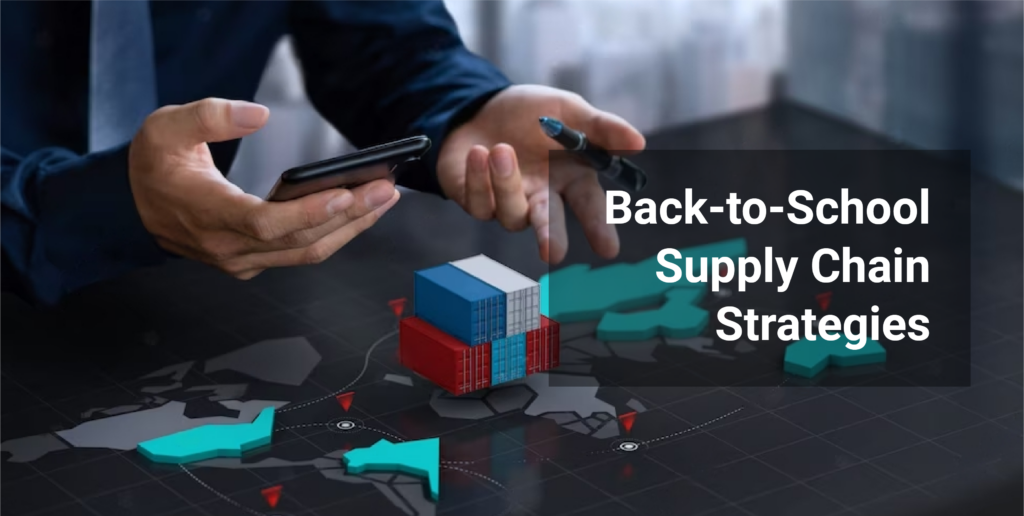The back to school season is officially underway, and its success will be a make-or-break moment for the logistics industry’s post-pandemic recovery.
After a stagnant 2022 peak season, many in the logistics sector are heavily focusing their attention on 2023’s back to school season as an indicator of better things to come in the months ahead.
Back to School Essentials
July is historically the time when consumers begin making their back to school essential purchases. The most recent data available shows positive signs that consumers are planning on spending more than ever before.
According to the National Retail Federation, consumers are anticipating spending $25 more this year than last year on school essentials. This is driven by the need to purchase higher-value ticket items such as laptops, tablets, and tech devices rather than traditional school supplies.
July is also the time when merchants traditionally begin to stock up their inventory levels ahead of the holiday season.
Some 3PLs are reporting that their fulfillment locations are experiencing a higher influx of inbound inventory ahead of peak season kickoff – signifying that many e-commerce merchants are optimistic that inventory will move in greater volumes than in recent years. However, this positive indicator that this year’s peak season will be more fruitful aside, there may well be cause for concern.
Disruptions on the Horizon
Several logistics companies recently shared that they have yet to receive the usual number of requests for inventory transportation from e-commerce sellers. This could be because many retailers are waiting to see how willing consumers are to spend in the back to school run-up before making a last-minute commitment about their peak season inventory logistics plans.
This could quite possibly be a grave error on the merchants’ side as there are potential disruptions on the horizon. While UPS drivers and pilots reached a tentative agreement to avert a strike that would have heavily affected the U.S. logistics industry, other national freight carriers are also facing challenges that are creating new uncertainty for retailers’ supply chains.
For example, trucking company Yellow recently ceased operations nationwide, which caused large retailers, like Walmart, to take their shipments to other carriers. This could result in prices increasing which will businesses will have no choice but to pass on to their customers. However, retailers who were reliant upon Yellow may need to scramble to find alternative solutions sooner rather than later. An estimated 20,000 companies including retail giants such as Amazon, Apple, and Samsung are now expected to be searching for the same lifeboat.
Risking It All On Returns
Strikes and stock-ups aside, there is also another logistics strategy that will determine an e-commerce’s success this back to school season—its returns policy. These days, returns or reverse logistics play an important role in any successful omnichannel strategy. As the number of returns continues to climb each year, and with customers expecting an easy, free, and streamlined return experience, sellers will want to ensure that they are utilizing a reverse strategy that will not be eating away at their profits.
Returns are an additional cost burden that businesses need to incur. Returns also impact a business’s carbon footprint as more returns mean more emissions as well as more products ending at landfills. Brands will want to carefully balance along this tightrope of catering to customer expectations and operating within means by gently influencing consumers to return products more smartly by leaning into their other expectations.
Changing Back to School Expectations
Sustainability is a key influencing factor for many consumers when shopping yet, many remain unaware of the environmental impact associated with reverse logistics. Informing customers of the impacts of their return habits and encouraging them to make returns only when necessary could dramatically reduce costs and environmental impact by consolidating items and making them available for resale at a much faster rate.
Businesses could also make changes to their returns policies. Instead of making blanket policy changes such as only offering free returns for a certain period or transactions of a certain value. For example, the habit of bracketing—buying multiple items only to return the ones that do not fit, became popular during the pandemic and remains popular with online shoppers. This consumer habit is extremely costly from a returns point of view and by making subtle changes to returns policies that limit free returns, e-commerce could discourage shoppers from repeatedly engaging in this behavior.
Time Will Tell
As always, supply chain operations require careful calibration that retailers will need to adjust to accommodate consumer and market changes. As the back to school season unfolds and peak season looms ever closer, e-commerce brands will need to remain vigilant to the latest industry developments, customer purchase patterns and preferences, and prepare accordingly to ensure that this year’s holiday season exceeds expectations.
As for the logistics industry, only time will tell if a full recovery and growth will occur by the end of Q4 or if these hopes will need to be pushed back into early next year.
If you’re looking for a flexible fulfillment partner that can effortlessly scale to match seasonal demand, then you should ship with Floship. Click here to speak with one of our team.

Ready To Upgrade Your Logistic Solution?
Speak to Floship ecommerce logistic consultant about improving your global support chain today




